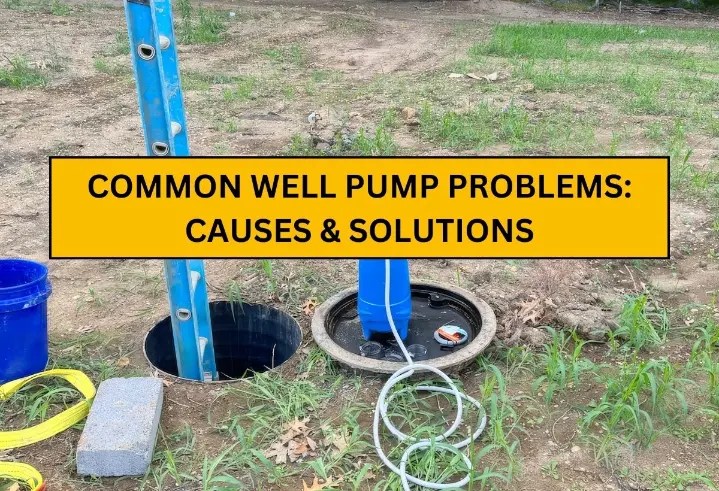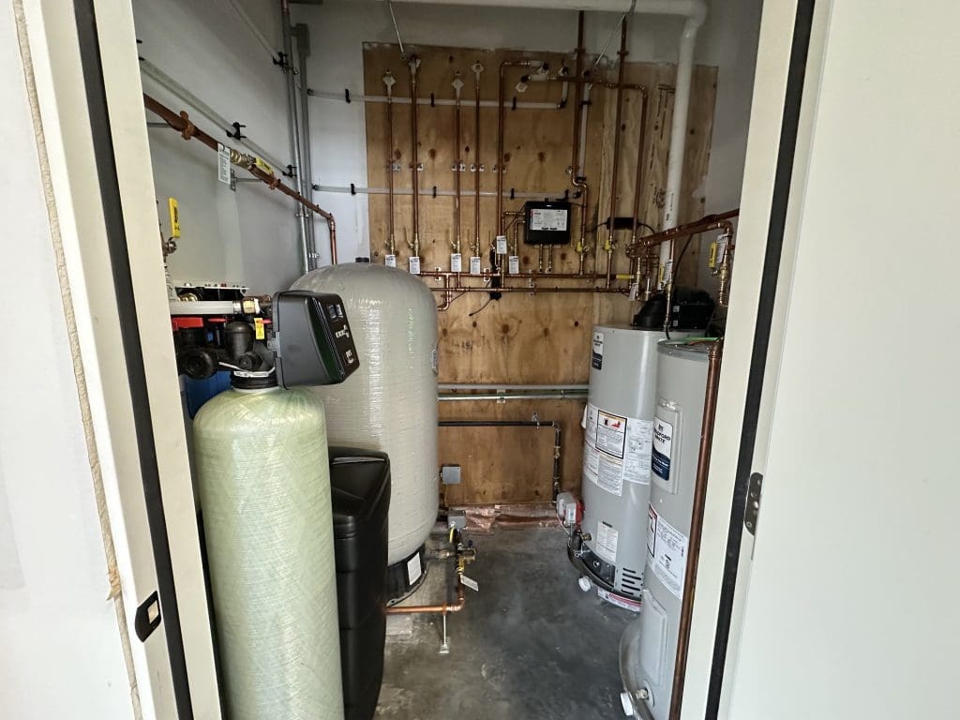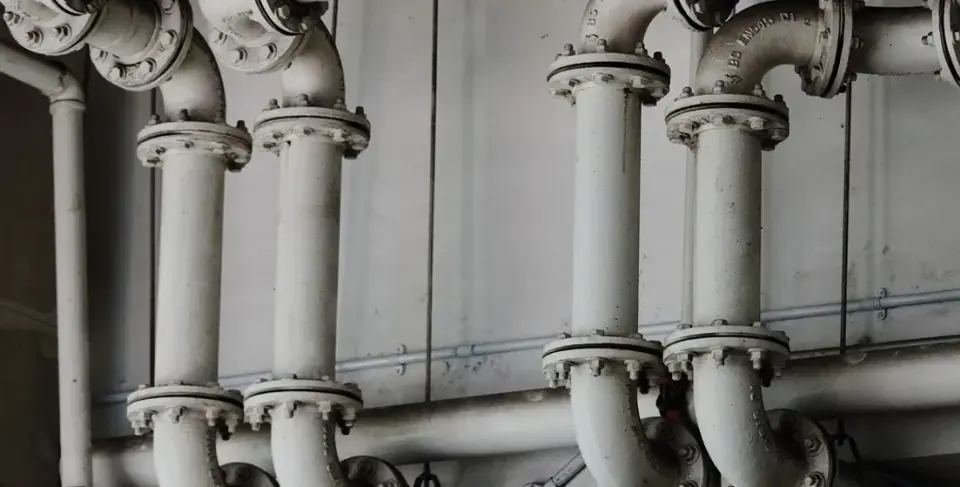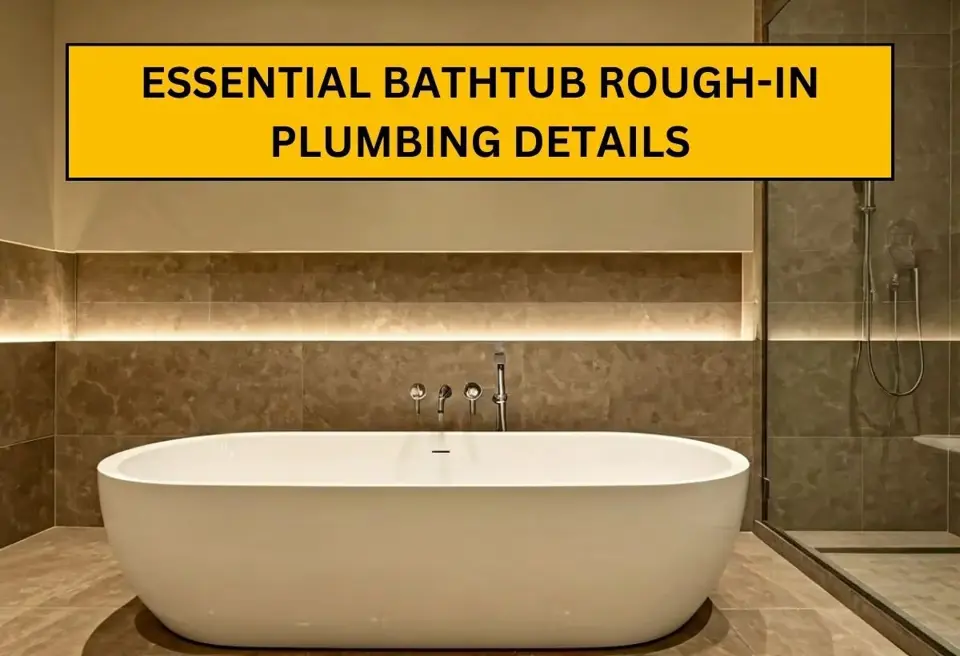A reliable well pump is the lifeline of homes that depend on private wells for their water supply. When issues arise, they can disrupt everything from cooking and cleaning to bathing and drinking water. At Pro Elite Plumbing & Heating, we’ve helped countless homeowners in Dutchess County identify, resolve, and prevent well pump issues. This guide explains common well pump problems, their causes, solutions, and preventative measures to keep your water flowing.
Understanding Your Well Pump System
A well pump system takes water from a well that is underground and sends it to your home. It is not just a pump sitting in water. It is a system made of different parts that work together to give you a steady water supply. This system usually includes a well, a pump, a pressure tank, and pipes.
The pump pulls water from the well and pushes it into the pressure tank. The pressure tank stores the water and helps keep water pressure steady. It also lowers the times the pump needs to turn on and off. Knowing how these parts work is the first step to spotting and fixing any issues with the water pump.
The Role and Types of Well Pumps in Dutchess County, NY
Dutchess County, NY, has many homes that use well water systems. These systems are usually reliable but need regular care to work well. A key part of a well water system is the well pump. It lifts water from the well and pushes it through your home’s plumbing system to keep good water pressure for daily needs.
There are two main types of well pumps used in Dutchess County: submersible pumps and jet pumps. Submersible pumps are underwater and are known for being quiet and efficient, especially in deep wells.
Jet pumps sit above the ground, often in a basement. They pull water up from the well and are more common for shallow wells. The choice of pump depends on the depth of the well and your home’s water needs. Picking the right pump and keeping it well-maintained is very important for a smooth-running well water system.
Types of Well Pumps
Well pumps come in a few options, each designed for specific needs.
Submersible Pumps
Submersible pumps sit underwater in deep wells. They’re powerful and quiet, making them perfect for homes with high water demands. Built to last, these pumps are ideal for wells deeper than 25 feet, offering reliable performance day after day.
Jet Pumps
Jet pumps are placed above ground and use suction to draw water. They work well for shallow or moderately deep wells, typically up to 25 feet. Easier to maintain than submersible models, jet pumps are a practical solution for households with average water usage.
Constant Pressure Pumps
Constant pressure pumps keep water pressure steady, no matter how much water is being used. They’re great for busy households where multiple taps or appliances run at the same time, providing a consistent and reliable flow of water.
Key Parts of a Well Pump System
Your well pump system relies on several important parts to deliver water to your home. Here’s a breakdown of how they work:
The Pump
The pump is the core of the system. It pulls water from your well and moves it into your home. Submersible pumps sit underwater in deep wells and are both quiet and powerful. Jet pumps, placed above ground, use suction to pull water up and are best for shallow wells.
Pressure Tank
The pressure tank acts as a water storage unit. It keeps water pressurized so your pump doesn’t need to run constantly. This provides steady water flow and reduces wear on the pump, helping it last longer.
Control Box
The control box regulates the pump by turning it on when water pressure drops. It also helps monitor the system’s operation. For submersible pumps, the control box is especially useful since the pump itself is not easily accessible.
Check Valve
The check valve stops water from flowing back into the well. This keeps pressure in the system and prevents the pump from overworking. Without a functioning check valve, your pump would have to work harder, leading to more wear and tear.
Signs Your Well Pump Needs Attention
Spotting early signs of well pump trouble can save you time, money, and frustration. Here’s what to look for:
No Water or Low Water Pressure: If water barely trickles out of your faucets or there’s no flow at all, it’s a sign your pump isn’t working properly. This might be due to a power issue, a faulty pressure tank, or a problem within the pump itself.
Frequent Cycling: Does your pump turn on and off constantly? This could mean your pressure tank has lost air or the pressure switch isn’t working right. This issue not only wastes energy but puts unnecessary strain on the system.
Strange Noises: Grinding, clicking, or humming sounds from your pump usually mean mechanical parts are worn or there’s trapped air in the system. Ignoring these noises can lead to bigger problems.
Dirty or Discolored Water: Yellow, brown, or cloudy water from your taps often points to sediment buildup in your well or pump. It could also mean your well is contaminated or the pump is deteriorating.
High Energy Bills: If your pump is running constantly, it will use a lot more electricity. A sudden spike in your electric bill might be your first clue that something’s wrong.
Sputtering Faucets: Air in your water lines can make your faucets sputter. This is often caused by leaks somewhere in the system.
Intermittent Water Flow: Water that starts and stops unpredictably might indicate problems with the pressure switch, electrical system, or the pump motor itself.
Common Well Pump Problems and Causes
Well pumps work hard to deliver water to your home, but over time, problems can crop up. Here are some common issues and what might be causing them:
Electrical Issues
- Tripped Circuit Breaker or Damaged Wiring: If the circuit breaker trips, your pump won’t receive power. Worn or damaged wiring can also cause the pump to stop working or behave inconsistently.
- Voltage Fluctuations: An unstable power supply can damage the control box or other sensitive parts, leading to irregular operation or even a complete shutdown.
Pressure Tank Malfunctions
- Loss of Air Pressure: The pressure tank helps maintain steady water flow. When air pressure is too low, the pump may cycle on and off too often, which can wear it out.
- Faulty Pressure Switch: This switch tells the pump when to start and stop. If it’s broken, the pump might not activate or shut off when it should, causing water flow problems.
Clogs and Sediment Build-Up
- Debris in the System: Dirt, sand, and other particles can clog pipes, impellers, or the pump itself. This not only reduces water flow but also puts added strain on the system.
- Well Sediment: If the well isn’t properly sealed, sediment can enter and affect water quality and pump performance.
Aging Equipment
- Old Pumps and Components: Most well pumps last between 8–15 years. As they age, they become less reliable, use more energy, and may break down more frequently. If your pump is near or past its lifespan, it could be time for a replacement.
- Leaks in the System
- Cracked Pipes or Valves: Small cracks or leaks can force the pump to work harder to maintain water pressure. Over time, this extra strain can wear out the pump.
- Loose Fittings: Connections that are loose or worn can lead to water loss, lower pressure, and wasted energy.
How to Fix Common Well Pump Problems
1. Electrical Repairs
Electrical issues are a common cause of well pump problems, but they’re often easy to fix with the right approach.
- Reset Breakers: Check your circuit breaker panel for any tripped breakers. Resetting them can quickly restore power to the pump.
- Inspect Wiring: Look for frayed wires or loose connections around the pump and control box. Damaged wiring should be replaced immediately to prevent further issues.
- Replace Components: Worn-out pressure switches or control boxes can disrupt the pump’s operation. Swapping them out for new ones often solves the problem.
2. Pressure Tank Fixes
The pressure tank plays a key role in regulating your water system, so any problems with it can cause disruptions.
- Repressurize the Tank: Loss of air pressure inside the tank can cause the pump to run excessively. Adding air to restore proper pressure often resolves the issue.
- Swap Out Faulty Switches: A broken switch may fail to activate the pump when needed. Replacing it helps bring the system back to normal.
- Upgrade Old Tanks: If the tank is outdated or unable to maintain consistent pressure, upgrading to a modern model can improve performance.
3. Clogs and Sediment Removal
Sediment and debris in your water system can reduce your pump’s performance over time.
- Flush the System: Removing sediment from pipes and the pump itself can restore proper water flow.
- Install Sediment Filters: Adding a filter protects the system from future clogs and keeps debris from damaging your pump.
4. Pump Replacement
Sometimes, repairing the pump isn’t enough, especially if it’s nearing the end of its life.
- Replace Worn-Out Pumps: Installing a new pump can solve recurring issues and improve your water system’s reliability.
- Opt for Modern Models: Upgrading to a newer, more durable pump often saves money in the long run by reducing energy use and maintenance needs.
5. Water Quality Improvements
Bad water quality can damage your pump and affect your home’s water supply.
- Use Filters: Install water filters to remove contaminants like sediment and sulfur.
- Disinfect Wells: Chlorinating the well can kill bacteria and eliminate unpleasant odors.
How to Prevent Well Pump Issues
Taking care of your well pump is much easier than dealing with major well pump repairs. Here are some steps to protect your system:
1. Schedule Annual Inspections
Have a professional check your pump and pressure tank each year. Catching small problems early saves time and money.
2. Test Your Water Regularly
Yearly water testing can help you spot contaminants like bacteria and sediment before they cause damage.
3. Add Sediment Filters
Protect your pump and pipes by installing a sediment filter. It’s an easy way to reduce debris buildup.
4. Watch Water Pressure
Keep an eye on your water pressure. Sudden changes might mean there’s a problem with your pump or tank.
5. Invest in Maintenance Plans
Regular care keeps your system running smoothly. Partnering with Pro Elite Plumbing & Heating for ongoing maintenance gives you peace of mind and reduces the chance of costly breakdowns.
Why Regular Maintenance is Worth It
Skipping routine care may seem like a way to save time, but it often leads to more trouble. Here’s why maintenance matters:
- Lower Repair Costs: Catching major issues early means smaller, less expensive fixes.
- Reliable Water Supply: Regular maintenance helps avoid interruptions in your water flow.
- Safe Water for Your Home: Testing and upkeep keep your water clean and safe for your family.
- Longer System Life: Proper care extends the lifespan of your pump and other components, saving you from premature replacements.
Why Choose Pro Elite Plumbing & Heating for Well Pump Services?
Homeowners in Dutchess County trust us for all their well pump needs. Here’s why we’re their go-to choice:
1. Decades of Experience
With more than 20 years in the business, our skilled technicians have handled every type of well pump issue. You can count on us to fix the problem quickly and thoroughly.
2. Always Ready to Help
Well pump failures don’t wait for regular business hours, and neither do we. Our team is on call 24/7 to get your water running again.
3. Honest Pricing
We believe in upfront quotes and no surprises. You’ll know exactly what to expect before any work begins.
4. Customer-Focused Service
We’re a family-owned company that treats every customer like a neighbor. From start to finish, we’ll make sure you’re happy with the results.
Don’t Let Well Pump Problems Disrupt Your Day
If your well pump is acting up, we’re here to help. Call Pro Elite Plumbing & Heating (845) 498-0976 today for fast, reliable well pump repairs and replacements in Dutchess County, NY. With expert solutions and 24/7 emergency support, we’ll get your water flowing again in no time. Contact us now!
Frequently Asked Questions
What are the first steps to take when you notice low water pressure?
When you have low water pressure, first check your pressure gauge. Look for readings that are not normal. Make sure all faucets are closed. This will help you see if high water flow is causing the issue. If the problem does not get better, look at your check valve. You may need to call a plumber for help with this.
How often should well pumps in Dutchess County be inspected?
To keep your well system working well and the water safe, you should have annual checks by a qualified well contractor. They will look at the pump, pressure tank, air bladder, and the health of the whole system. Regular water quality tests are also important.
What should I do if there’s a lack of water in my home?
If no water is coming out of your faucets, check your well pump and pressure tank first. It could be due to a power issue, a dry well, or a problem with the pump itself.
How do I know if my pressure switch is malfunctioning?
A common sign of a malfunctioning pressure switch is a pump that doesn’t turn on or off as it should. You may also notice fluctuating water pressure or a complete lack of water flow.
Can my water heater affect my well pump system?
While the water heater and well pump are separate systems, sediment buildup or blockages in the heater can restrict water flow, making it seem like there’s an issue with the pump.
How does the water table affect my well pump?
If the water table in your area drops due to drought or high usage, your well pump might struggle to pull water, leading to poor performance or a dry well.
What causes short cycling in a well pump?
Short cycling, where the pump turns on and off frequently, is often caused by a waterlogged pressure tank or an air bladder that has lost pressure. Addressing these issues promptly can prevent pump damage.
How can a clogged water filter impact my well pump?
A clogged water filter can restrict water flow, causing your pump to overwork or fail to provide consistent pressure. Regularly replacing filters can prevent this issue.
Do I need a water softener for my well water system?
If you have hard water, a water softener can help reduce mineral buildup in your pump, pipes, and appliances, extending their lifespan and improving water quality.
Why is my well pump making unusual noises?
Unusual noises like grinding, clicking, or humming can indicate worn-out bearings, debris in the pump, or a motor issue. These should be addressed quickly to avoid further damage.
Can hard water damage my well pump?
Yes, hard water can lead to scaling and mineral buildup in the pump, reducing its efficiency over time. Installing a water softener can protect your system and keep it running smoothly.






